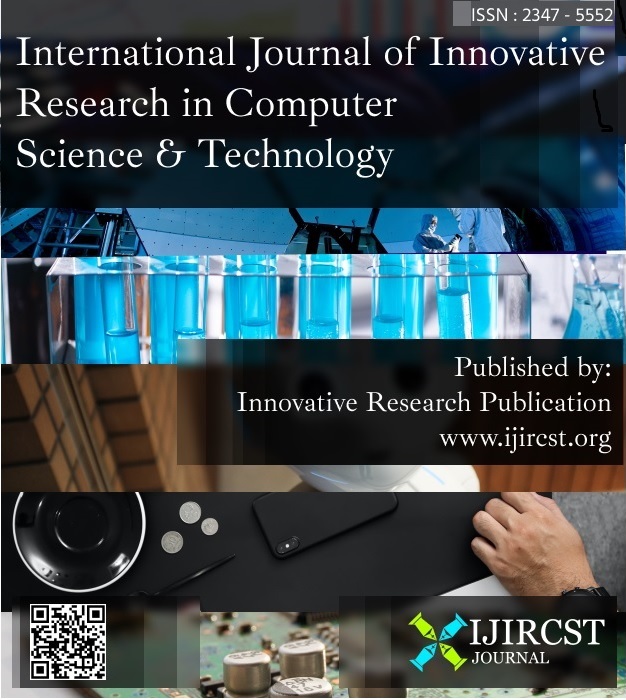Drowsiness Detection System: Integrating YOLOv5 Object Detection with Arduino Hardware for Real-Time Monitoring
Keywords:
Drowsiness Detection, Eyes Detection, Blink Pattern, Face Detection, LBP, SWM.Abstract
Drowsy driving remains a significant cause of accidents worldwide, prompting the need for effective real-time monitoring systems to detect and prevent driver fatigue. In this paper, we propose a novel approach for drowsiness detection leveraging state-of-the-art deep learning techniques and compact hardware implementation. Our system integrates the YOLOv5 object detection model with Arduino hardware, offering a portable and efficient solution for on-road application. The YOLOv5 model is employed for its superior speed and accuracy in detecting facial landmarks and identifying signs of drowsiness in real-time video streams. By focusing on the key features indicative of drowsiness, such as eye closure, head nodding, and yawning, our system can effectively discern driver fatigue levels with high precision. Furthermore, the utilization of Arduino hardware enables seamless integration of the detection system into vehicles, providing a cost-effective and accessible solution for widespread deployment. Leveraging the computational capabilities of Arduino, we optimize the inference process of YOLOv5 to ensure real-time performance on resource-constrained platforms. We present experimental results demonstrating the efficacy and efficiency of our proposed drowsiness detection system. Through rigorous testing in simulated driving conditions and real-world scenarios, we validate the system's ability to accurately identify drowsiness cues while maintaining low latency. Overall, our research contributes to advancing the field of driver safety technology by offering a practical and scalable solution for drowsiness detection. The integration of YOLOv5 with Arduino hardware showcases the potential for deploying sophisticated deep learning models in real-world applications, paving the way for enhanced road safety and accident prevention measures.
References
T. Vesselenyi, S. Moca, A. Rus, T. Mitran, and B. Tǎtaru, “Driver drowsiness detection using ANN image processing,” in IOP Conference Series: Materials Science and Engineering, Institute of Physics Publishing, Oct. 2017. doi: 10.1088/1757-899X/252/1/012097.
S. Mehta, S. Dadhich, S. Gumber, and A. J. Bhatt, “Real-Time Driver Drowsiness Detection System Using Eye Aspect Ratio and Eye Closure Ratio Fatigue Detection Non-Intrusive Methods Driver monitoring system.” [Online]. Available: https://ssrn.com/abstract=3356401
K. Ahmad, P. Ping Em, and N. Azlina Ab Aziz, “Machine Learning Approaches for Detecting Driver Drowsiness: A Critical Review,” 2023.
J. Gwak, A. Hirao, and M. Shino, “An investigation of early detection of driver drowsiness using ensemble machine learning based on hybrid sensing,” Applied Sciences (Switzerland), vol. 10, no. 8, Apr. 2020, doi: 10.3390/APP10082890.
K. Kumari, “Review on Drowsy Driving: Becoming Dangerous Problem,” International Journal of Science and Research, [Online]. Available: www.ijsr.net
Y. Albadawi, M. Takruri, and M. Awad, “A Review of Recent Developments in Driver Drowsiness Detection Systems,” Sensors, vol. 22, no. 5. MDPI, Mar. 01, 2022. doi: 10.3390/s22052069.
W. Deng and R. Wu, “Real-Time Driver-Drowsiness Detection System Using Facial Features,” IEEE Access, vol. 7, pp. 118727–118738, 2019, doi: 10.1109/ACCESS.2019.2936663.
P. Viola and M. Jones, “Rapid Object Detection using a Boosted Cascade of Simple Features.”
F. You, Y. Gong, H. Tu, J. Liang, and H. Wang, “A Fatigue Driving Detection Algorithm Based on Facial Motion Information Entropy,” J Adv Transp, vol. 2020, 2020, doi: 10.1155/2020/8851485.
K. Kim, K. Kim, and S. Jeong, “Application of YOLO v5 and v8 for Recognition of Safety Risk Factors at Construction Sites,” Sustainability, vol. 15, no. 20, p. 15179, Oct. 2023, doi: 10.3390/su152015179.
P. P. S. Reddy, G. S. P. Khadyoth, V. S. G. Raman, G. S. D. Reddy, and H. B. Valiveti, “Soft Computing Techniques for Driver Alertness,” in Journal of Physics: Conference Series, Institute of Physics, 2022. doi: 10.1088/1742-6596/2325/1/012045.
T. Vesselenyi, S. Moca, A. Rus, T. Mitran, and B. Tǎtaru, “Driver drowsiness detection using ANN image processing,” in IOP Conference Series: Materials Science and Engineering, Institute of Physics Publishing, Oct. 2017. doi: 10.1088/1757-899X/252/1/012097.
D. Singh and A. Singh, “Enhanced Driver Drowsiness Detection using Deep Learning,” ITM Web of Conferences, vol. 54, p. 01011, 2023, doi: 10.1051/itmconf/20235401011.
J. H. Kim, N. Kim, Y. W. Park, and C. S. Won, “Object Detection and Classification Based on YOLO-V5 with Improved Maritime Dataset,” J Mar Sci Eng, vol. 10, no. 3, Mar. 2022, doi: 10.3390/jmse10030377.
M. Hussain, “YOLO-v1 to YOLO-v8, the Rise of YOLO and Its Complementary Nature toward Digital Manufacturing and Industrial Defect Detection,” Machines, vol. 11, no. 7. Multidisciplinary Digital Publishing Institute (MDPI), Jul. 01, 2023. doi: 10.3390/machines11070677.
M. Mutava Gabriel and K. Paul Kuria, “Arduino Uno, Ultrasonic Sensor HC-SR04 Motion Detector with Display of Distance in the LCD.” [Online]. Available: www.ijert.org
L. Louis, “Working Principle of Arduino and Using it as a Tool for Study and Research,” International Journal of Control, Automation, Communication and Systems, vol. 1, no. 2, pp. 21–29, Apr. 2016, doi: 10.5121/ijcacs.2016.1203
D. Geeroms, S. Bertho, M. De Roeve, R. Lempens, M. Ordies, and J. Prooth, “Ardusat, An Arduino-Based Cubesat Providing Students With The Opportunity To Create Their Own Satellite Experiment And Collect Real-World Space Data.”
M. Mahamat, S. A. Adeshina, T. Arreytambe, and Institute of Electrical and Electronics Engineers, Proceedings of the 11th International Conference on Electronics, Computer and Computation (ICECCO’14) : International Conference, September 29-October 1, 2014 : Abuja, Nigeria.
A. Yadav, “Working and Usage of Arduino as a Tool for Study and Research,” International Journal of Research Publication and Reviews, pp. 462–468, Oct. 2022, doi: 10.55248/gengpi.2022.3.10.20




